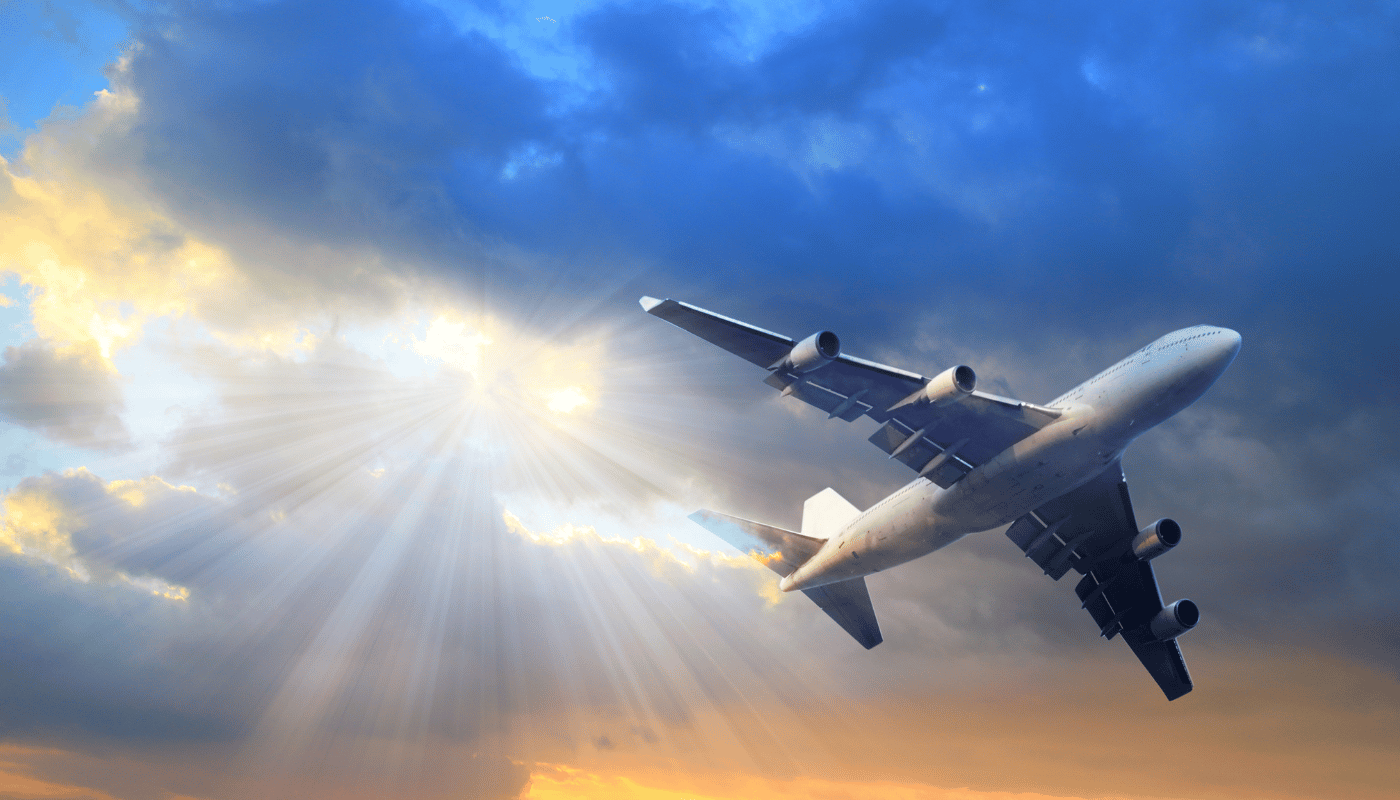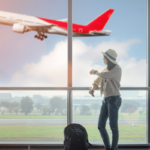Air transportation has revolutionized the way we connect with the world, shrinking distances and making global travel faster than ever before. However, this modern marvel is not without its drawbacks. Among the various challenges it presents, one stands out as particularly significant, affecting not just travelers but the planet as a whole. This article delves into what is considered one of the primary disadvantages of air transportation, shedding light on an issue that demands attention and action.
High Cost of Air Travel
When considering the question, “what is one of the main disadvantages of air transportation?”, the high cost of air travel frequently surfaces at the top of the list. The expenses associated with aviation extend far beyond the ticket price for passengers. Airlines face enormous operational costs, including fuel, maintenance, and labor, which in turn inflate the prices for consumers. This financial barrier makes air travel less accessible for a significant portion of the population, limiting its use to those who can afford it or for whom air travel is an absolute necessity.
Several factors contribute to the high cost of air transportation. First and foremost, the price of aviation fuel is volatile and can represent a significant portion of an airline’s operating expenses. Additionally, the cost of purchasing and maintaining aircraft is substantial. Airlines must also manage a complex array of regulatory compliance and safety standards, which further drives up costs. These financial demands ensure that the price of airfare remains high, positioning air travel as a less economical choice compared to other forms of transportation such as buses or trains for the average consumer.
Moreover, the environmental impact of air travel, in terms of carbon emissions, has led to increased regulatory pressures and the implementation of green taxes in some jurisdictions, which adds another layer of costs that often get passed down to the traveler. This has sparked a debate about the sustainability of air travel and its long-term viability as the primary means of long-distance transportation, especially in a world that is increasingly conscious of environmental issues.
Breaking Down the Costs: Why Flying High Comes at a High Price
Understanding the breakdown of costs associated with air travel can provide valuable insights into why it remains one of the more expensive transportation options. The financial structure of airlines is complex, with a significant portion of revenue being reinvested into operations, safety measures, and customer service enhancements. These investments are crucial for maintaining the high standards expected by passengers and regulatory bodies alike.
- Fuel expenses, which are subject to global oil price fluctuations.
- Aircraft maintenance and acquisition costs, including leasing and purchasing.
- Labor costs, which encompass salaries for pilots, flight attendants, ground crew, and other essential personnel.
- Regulatory compliance and safety measures, which require substantial ongoing investment.
- Environmental taxes and charges designed to offset the carbon footprint of air travel.
While the allure of reaching far-flung destinations in a matter of hours is undeniable, the financial implications of air travel cannot be overlooked. The high cost of air travel not only affects individual consumers but also has broader economic implications, influencing tourism patterns and global business operations. As the world continues to search for more sustainable and cost-effective means of transportation, the aviation industry faces the challenge of adapting to these evolving demands without compromising on safety and quality.
Limited Destinations and Routes
One of the main disadvantages associated with air transportation is the limitation in terms of destinations and routes. Not all cities or regions are equipped with airports, and even if they are, smaller airports often have fewer connections, forcing passengers to opt for more complicated itineraries that involve multiple layovers. This limitation not only affects the convenience but also the time efficiency that air travel promises. For passengers looking to reach remote or less popular destinations, this can significantly increase travel time and costs.
Moreover, the availability of routes is heavily dependent on the commercial viability for airlines, leading to fewer flights to certain destinations. During off-peak seasons, some routes may be reduced or even discontinued, posing challenges for travelers who rely on these flights. The focus on profitable routes by airlines means that connectivity to lesser-known destinations remains sparse, reducing accessibility for both individuals and businesses in these regions.
Another aspect to consider is the geopolitical and environmental constraints that limit air route options. Certain regions may be inaccessible due to political tensions, while others might pose significant safety risks due to natural conditions. These factors further restrict the flexibility of air transportation, contrasting sharply with the adaptability of road or rail networks that can often bypass such obstacles more easily.
Further Insights on Limited Destinations and Routes
Exploring deeper into the challenges posed by limited destinations and routes, it becomes clear that this limitation has wider repercussions. It not only impacts the convenience and accessibility of air travel but also affects the economic development of isolated regions. Areas without direct air links may struggle to attract tourism or business investments, which in turn can lead to slower economic growth compared to more connected regions.
Another Perspective on Destination and Route Limitations
From another perspective, the focus on major hubs by airlines contributes to congestion and environmental concerns at these airports. This concentration of flights in certain areas increases the carbon footprint of air travel and puts pressure on the infrastructure of these airports, potentially leading to delays and a decrease in service quality. Thus, the issue of limited destinations and routes is intertwined with broader challenges facing the aviation industry.
| Aspect | Impact | Example |
|---|---|---|
| Accessibility | Reduced for remote areas | Small island destinations |
| Economic Development | Slower in less connected regions | Rural areas without airports |
| Environmental Concerns | Increased at major hubs | Large international airports |
| Service Quality | Potential decrease | Overburdened airports |
| Travel Time and Costs | Increased for indirect routes | Flights with multiple layovers |
In summary, while air travel is celebrated for its speed and efficiency over long distances, the limitations in terms of destinations and routes present significant challenges. These limitations not only inconvenience travelers but also have broader implications for economic development, environmental sustainability, and the overall accessibility of air transportation. As the aviation industry continues to evolve, finding solutions to these challenges will be crucial in making air travel more inclusive and accessible to all regions.
Environmental Impact of Flights
The realm of air transportation, while remarkable for its efficiency and speed, casts a significant shadow on our environment, mainly due to the substantial carbon footprint it leaves behind. Airplanes emit a wide range of greenhouse gases and pollutants, including carbon dioxide (CO2), nitrogen oxides (NOx), and water vapor, which contribute to climate change and global warming. Among these, CO2 is the most significant, with aviation responsible for about 2-3% of global CO2 emissions. However, when considering the effects of high-altitude emissions, the impact is even more pronounced, as these contribute to the formation of contrails and cirrus clouds that have a warming effect on the planet.
Moreover, the aviation industry’s reliance on fossil fuels exacerbates its environmental impact. Despite ongoing efforts to transition to more sustainable fuels and improve energy efficiency, the sector’s rapid growth continues to offset these advancements. This growth is not only a concern for greenhouse gas emissions but also leads to increased noise pollution and affects local air quality around airports, contributing to various health issues among nearby residents.
Another significant environmental concern is the effect of aviation on biodiversity. Airports often require vast tracts of land for construction and expansion, leading to habitat destruction, fragmentation, and disruption of local wildlife populations. Additionally, the increase in air traffic has been linked to a higher risk of bird strikes, which poses a threat to avian species and can lead to critical safety issues for flights.
| Emission Type | Impact on Environment | Percent Contribution to Global Emissions |
|---|---|---|
| CO2 | Global warming, Climate change | ~2-3% |
| NOx | Ozone formation, Air quality deterioration | Variable |
| Water Vapor | Formation of contrails and cirrus clouds, Additional warming | Not quantified |
| Particulates | Local air pollution, Health issues | Minor but significant |
| Sound Pollution | Noise pollution, Health issues | Not quantified |
The environmental impact of flights extends beyond just the emissions during flight. The entire lifecycle of an aircraft, from manufacturing to disposal, contributes to its environmental footprint. The production process involves the use of vast amounts of materials, energy, and water, while the decommissioning of aircraft also poses challenges regarding recycling and waste management. This comprehensive perspective underscores the importance of not only improving the efficiency of flights but also considering alternative modes of transportation and investing in technological innovations that can reduce the environmental impact of air travel.
In conclusion, while air transportation has revolutionized the way we connect across the globe, it comes with significant environmental costs. Addressing these impacts requires a multifaceted approach, including advancing technology, transitioning to sustainable fuels, and implementing policies that encourage the reduction of flight-related emissions. As consumers, choosing to fly less frequently, opting for direct routes, and supporting airlines that invest in sustainability can also make a difference. The journey toward greener skies is complex, but with concerted efforts, it is possible to mitigate the environmental footprint of aviation.
Vulnerability to Weather Conditions
The susceptibility of air transportation to weather conditions stands as a significant downside, impacting its reliability and efficiency. Unlike road or rail transport, which can often continue operations in various weather conditions, air travel is profoundly affected by adverse weather. This includes storms, fog, heavy rain, or volcanic ash, which can lead to delays, cancellations, and, consequently, financial losses for airlines and passengers alike.
One of the core reasons for this vulnerability is the strict safety standards enforced in aviation. Pilots and air traffic controllers must make decisions based on ensuring passenger safety, which often means grounding or rerouting flights during severe weather conditions. This not only disrupts travel plans but also increases operational costs for airlines, as they must accommodate affected passengers and potentially face increased fuel costs for rerouted flights. Additionally, the precision required for takeoff, landing, and navigating through the air space is significantly compromised in poor weather conditions, necessitating a higher margin for error and, therefore, more stringent precautions.
Beyond direct operational impacts, weather-related disruptions can have a cascading effect on the global air travel network. A delay in one location can lead to missed connections and further delays or cancellations worldwide, highlighting the interconnected nature of air transportation. This complexity adds layers of challenges in managing flight schedules and maintaining smooth operations across the board.
- Storms and heavy rain can lead to flight cancellations.
- Fog can severely limit visibility, delaying flights.
- Volcanic ash is hazardous for aircraft engines, leading to airspace closures.
- High winds can affect takeoff and landing operations.
- Extreme cold or heat can impact aircraft performance and safety.
In summary, while air transportation offers unparalleled speed and range, its vulnerability to weather conditions poses significant operational challenges. These challenges can lead to financial losses for airlines and inconvenience for passengers, underscoring the importance of continuous advancements in weather prediction and aviation technology to mitigate these impacts.
Restrictions on Cargo and Luggage
One significant downside of air transportation is the stringent restrictions on cargo and luggage. These limitations are not merely about the weight or the number of bags you can check in but also encompass a wide range of regulations concerning what items are permitted onboard. Airlines and international regulatory bodies impose these rules to ensure safety, security, and compliance with international laws. For passengers, this means having to navigate a complex set of guidelines that dictate everything from the size of your toiletries to the type of batteries you can carry.
Moreover, the restrictions extend to cargo shipments, where the regulations are even more rigorous. Items that are considered hazardous materials, such as flammable liquids, pressurized gas containers, and certain types of batteries, face strict controls or are outright banned. This not only impacts individual travelers but also affects industries reliant on air freight for the rapid distribution of goods. Consequently, businesses must often resort to alternative, slower means of transportation for items that cannot be shipped by air, affecting efficiency and potentially increasing costs.
Additionally, the consequences of failing to comply with these luggage and cargo regulations can be severe, ranging from financial penalties to the confiscation of prohibited items. It creates an environment where passengers and businesses alike must be acutely aware of and adhere to these regulations to avoid complications during their travel or shipping processes.
- Weight limitations for checked and carry-on luggage
- Size restrictions for personal items and carry-ons
- Prohibited items list, including certain liquids, gels, and aerosols
- Regulations on transporting batteries and electronic devices
- Special rules for carrying sports equipment, musical instruments, and medical supplies
In conclusion, while air transportation offers unmatched speed and connectivity, the restrictions on cargo and luggage pose significant challenges for both passengers and businesses. These limitations require careful planning and adherence to ensure a smooth and compliant travel experience. As the aviation industry continues to evolve, it is imperative for travelers and shippers to stay informed about these regulations to mitigate any potential disruptions to their journeys or operations.







